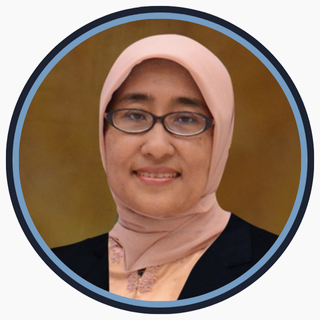EVALUATION OF POLIO IMMUNIZATION COVERAGE AND ACUTE FLACCID PARALYSIS SURVEILLANCE IN EAST JAVA, INDONESIA, 2018-2022
Evaluasi Cakupan Imunisasi Polio dan Surveillance Paralisis Flaksida Akut di Jawa Timur, Indonesia Tahun 2018-2022

Downloads
Background: Indonesia has successfully eradicated wild poliovirus since 2005 using robust immunization and AFP surveillance programs. However, circulating vaccine-derived poliovirus type 2 has challenged these commitments, followed by the 2024 outbreak in East Java. Purpose: The study aims to analyze the polio eradication initiative by assessing polio immunization coverage and AFP surveillance in East Java. Methods: A descriptive, quantitative study design and retrospective analysis of polio immunization coverage and AFP surveillance indicators from the Provincial Health Office, East Java, from 2018–2022. The data was collected and analyzed using Excel, EpiInfo7, and Health Mapper software. Results: OPV4 coverage ranged from 89.95% to 100.76%, while IPV coverage ranged from 73.98 % to 94.18% from 2018 to 2020; the proportion of districts and cities for IPV coverage increased from 0% in 2018 to 44.74% in 2022, below the 95% WHO target. Of the 826 cases of AFP reported, 820 (99.27%) were actual AFP cases <15 years of age, with most (49.02%) being <5 years of age. Non-polio AFP rates ranged from 0.80 in 2020 to 2.59 in 2022 per 100,1000 <15 years of age, with the proportion of districts and cities slightly declining from 55.26% in 2018 to 50% in 2022. The annual mean percentage of AFP-adequate specimens is 61.15%, with the proportion of districts and cities significantly declining from 31.58% in 2018 to 10.53% in 2022, below the 80% target. Conclusion: IPV immunization coverage and AFP surveillance indicators are below the WHO-recommended targets across districts and cities in East Java.
Ciapponi A, Bardach A, Ares LR, Glujovsky D, Cafferata ML, Cesaroni S, et al. Sequkential inactivated (IPV) and live oral (OPV) poliovirus vaccines for preventing poliomyelitis. Cochrane Database Syst Rev. 2019;(12).
Bessing B, Dagoe EA, Tembo D, Mwangombe A, Kanyanga MK, Manneh F, et al. Evaluation of the Acute flaccid paralysis surveillance indicators in Zambia from 2015–2021: a retrospective analysis. BMC Public Health. 2023;23(1):2227.
Tuma JN. Surveillance to track progress toward polio eradication—worldwide, 2019–2020. MMWR Morb Mortal Wkly Rep. 2021;70.
Azizatunnisa’ L, Cintyamena U, Mahendradhata Y, Ahmad RA. Ensuring sustainability of polio immunization in health system transition: lessons from the polio eradication initiative in Indonesia. BMC Public Health. 2021;21:1–16.
Mekonnen ZA, Gelaye KA, Were MC, Tilahun B. Timely completion of vaccination and its determinants among children in northwest, Ethiopia: a multilevel analysis. BMC Public Health. 2020;20:1–13.
Raji IA, Abubakar AU, Ahmad A, Gidado S, Olorukooba AA, Lawal BB, et al. Evaluation of acute flaccid paralysis surveillance indicators in Sokoto state, Nigeria, 2012–2019: a secondary data analysis. BMC Public Health. 2021;21:1–9.
Manyanga D, Byabamazima C, Masvikeni B, Daniel F. Assessment of acute flaccid paralysis surveillance performance in East and Southern African countries 2012-2019. Pan Afr Med J. 2020;36(1).
Rayes R, Haar RJ, AlMhawish N. Epidemiological Analysis of Acute Flaccid Paralysis (AFP) Surveillance in Conflict-Affected Syria. Berkeley Sci J. 2022;26(2).
Najikhah N. Basic immunization coverage mapping in Indonesia. In: The International Conference on Public Health Proceeding. 2021. p. 645–54.
Ministry of Health of the Republic of Indonesia. Polio is not over yet [Internet]. Jakarta; 2020. Available from: https://www.who.int/docs/default-source/searo/indonesia/sit-rep/epi-vpd-bulletin-ed1.pdf?sfvrsn=ae70706f_2
GPEI. Report of the Indonesia Polio Outbreak Response Assessment – July 2023. 2023.
WHO. Report of the Indonesia Polio outbreak response assessment – July 2023 [Internet]. 2023. Available from: https://www.who.int/indonesia/news/publications/other-documents/report-of-the-indonesia-polio-outbreak-response-assessment---july-2023
Ministry of Health of the Republic of Indonesia. Main Results of Riskesdas 2018. Badan Penelitian dan Pengembangan Kesehatan Kementerian Kesehatan RI. 2018.
Nasution R. Indonesia at high risk of poliovirus spread: Health Ministry. 2022 Nov 19; Available from: https://en.antaranews.com/news/261305/indonesia-at-high-risk-of-poliovirus-spread-health-ministry
Cintyamena U, Azizatunnisa’ L, Ahmad RA, Mahendradhata Y. Scaling up public health interventions: case study of the polio immunization program in Indonesia. BMC Public Health. 2021;21:1–12.
Cintyamena U, Bura V, Surya A, Wibisono H, Ahmad RA, Mahendradhata Y. Maintaining Polio-free status in Indonesia during the COVID-19 pandemic. Glob Heal Sci Pract. 2022;10(1).
Modlin JF, Bandyopadhyay AS, Sutter R. Immunization against poliomyelitis and the challenges to worldwide poliomyelitis eradication. J Infect Dis. 2021;224(Supplement_4):S398–404.
Alfaro-Murillo JA, Ávila-Agüero ML, Fitzpatrick MC, Crystal CJ, Falleiros-Arlant L-H, Galvani AP. The case for replacing live oral polio vaccine with inactivated vaccine in the Americas. Lancet. 2020;395(10230):1163–6.
Wahjuhono G, Revolusiana null, Widhiastuti D, Sundoro J, Mardani T, Ratih WU, et al. Switch from oral to inactivated poliovirus vaccine in Yogyakarta Province, Indonesia: summary of coverage, immunity, and environmental surveillance. J Infect Dis. 2014;210(suppl_1):S347–52.
Armyta DN. The epidemiological overview of acute flaccid paralysis cases in Surabaya during 2014-2017. J Berk Epidemiol [Internet]. 2019 Aug 30;7(2):163–71. Available from: https://e-journal.unair.ac.id/JBE/article/view/12844
El Hage S, Safi S, Assouad E, El Kareh A, Mokled E, Salameh P. Acute flaccid paralysis incidence rate and epidemiology in children in Lebanon: a rise in numbers in the post-vaccination and refugee crisis era. Afr Health Sci. 2022;22(2):116–24.
Lemrabet S, El Qazoui M, Idrissi Azzouzi LM, Rguig A, Elhamdaoui M, Filali-Maltouf A, et al. Evaluation of the Acute Flaccid Paralysis Virological Surveillance System in Polio‐Free Morocco, 2010–2018. Adv Public Heal. 2022;2022(1):2729937.
Zerriouh F, Khader Y, Qasem N, Abusal K, Iblan I, Ghaffari L, et al. Evaluation of the acute flaccid paralysis surveillance system in polio-free Jordan, 2012-2016: retrospective secondary analysis. JMIR public Heal Surveill. 2019;5(3):e14217.
Rasyidi AH, Suroiyah A, Yamani LN. Evaluation of the acute flaccid paralysis surveillance system of polio free in East Java, Indonesia, 2019. Indian J Forensic Med Toxicol. 2021;15(1).
Burkholder B, Wadood Z, Kassem AM, Ehrhardt D, Zomahoun D. The immediate impact of the COVID-19 pandemic on polio immunization and surveillance activities. Vaccine. 2023;41:A2–11.
Tegegne AA, Maleghemi S, Anyuon AN, Zeleke FA, Legge GA, Ferede MA, et al. The sensitivity of acute flaccid paralysis surveillance-the case of South Sudan: retrospective secondary analysis of AFP surveillance data 2014-2019. Pan Afr Med J. 2022;42(Suppl 1).
- Every manuscript submitted to must observe the policy and terms set by the Jurnal Berkala Epidemiologi
- Publication rights to manuscript content published by the Jurnal Berkala Epidemiologi is owned by the journal with the consent and approval of the author(s) concerned. (download copyright agreement)
- Complete texts of electronically published manuscripts can be accessed free of charge if used for educational and research purposes according to copyright regulations.

JBE by Universitas Airlangga is licensed under a Creative Commons Attribution-ShareAlike 4.0 International License.























